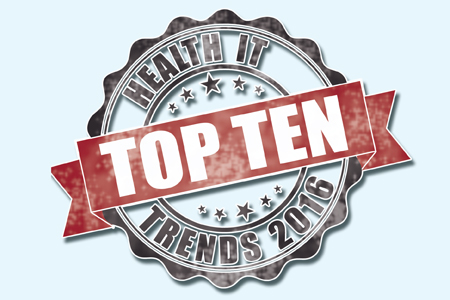November/December 2015 HITO Issue
|
From The Editor
There are numerous problems with many EHR products on the market today that I accept as fact — they’re cumbersome from a data entry perspective, counter-intuitive to clinical workflows, and aren’t conducive to interoperability. |
|
|
|
Cover Feature
For the past five years, EHR/MU was selected as the top health IT initiative for the coming year. This year, there’s a new top initiative, and what it is should come as no surprise. |
|
|
|
Feature Article
If you’re considering entering the world of social media — or if you want to improve your current effort — you’d be wise to heed the advice of two who are doing it right. |
|
|
| Case Study
By using analytics technology to measure revenue metrics across facilities and physicians, Orlando Health avoided $22.7 million in bad debt write-offs.
Q&A's
By combining Kaizen methodologies with real-time asset tracking technology, Health First has reduced patient discharge times, wait times, and overall length of stay.
Changing consumer expectations and requirements driven by the Affordable Care Act are making deeper patient engagement a priority at healthcare organizations. Yet making real progress requires effort from both caregivers and patients. Roundtables
Getting different IT and software applications to communicate and share data effectively remains a challenge as healthcare providers seek to achieve interoperability, but progress is being made.
The growing prevalence of mHealth technology promises a new dynamic between patients and caregivers, as well as better health outcomes and cost-effificiency. Yet challenges remain in the effort to get both patients and providers on board. |







